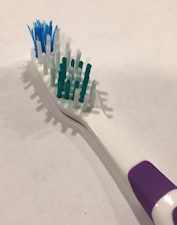
Career
Path Forecast
 According to the U.S. Department of Labor, Bureau of Labor Statistics,
employment of dentists is projected to grow by 16 percent through 2018,
which is faster than the average for all occupations.
According to the U.S. Department of Labor, Bureau of Labor Statistics,
employment of dentists is projected to grow by 16 percent through 2018,
which is faster than the average for all occupations.
The demand for dental
services is expected to continue to increase. The overall U.S.
population is growing, and the elderly segment of the population is
growing even faster; these phenomena will increase the demand for dental
care. Many members of the baby-boom generation will need complicated
dental work.
In addition, elderly
people are more likely to retain their teeth than were their
predecessors, so they will require much more care than in the past. The
younger generation will continue to need preventive checkups despite an
overall increase in the dental health of the public over the last few
decades. Recently, some private insurance providers have increased their
dental coverage. If this trend continues, people with new or expanded
dental insurance will be more likely to visit a dentist than in the
past. Also, although they are currently a small proportion of dental
expenditures, cosmetic dental services, such as providing
teeth-whitening treatments, will become increasingly popular. This trend
is expected to continue as new technologies allow these procedures to
take less time and be much less invasive.
However,
employment of dentists is not expected to keep pace with the increased
demand for dental services. Productivity increases from new technology,
as well as the tendency to assign more tasks to dental hygienists and
assistants, will allow dentists to perform more work than they have in
the past. As their practices expand, dentists are likely to hire more
hygienists and dental assistants to handle routine services.
Dentists will
increasingly provide care and instruction aimed at preventing the loss
of teeth, rather than simply providing treatments such as fillings.
Improvements in dental technology also will allow dentists to offer more
effective and less painful treatment to their patients.
As an increasing
number of dentists from the baby-boom generation reach retirement age,
many of them will retire or work fewer hours and stop taking on new
patients. Furthermore, the number of applicants to, and graduates from,
dental schools has increased in recent years. Job prospects should be
good, because younger dentists will be able to take over the work of
older dentists who retire or cut back on hours, as well as provide
dental services to accommodate the growing demand.
Demand
for dental services tends to follow the business cycle, primarily
because these services usually are paid for either by the patient or by
private insurance companies. As a result, during slow times in the
economy, demand for dental services can decrease; consequently, dentists
may have difficulty finding employment, or if already in an established
practice, they may work fewer hours because of reduced demand.
Note: Some resources in this section are provided by the US Department
of Labor, Bureau of Labor Statistics.
|
|